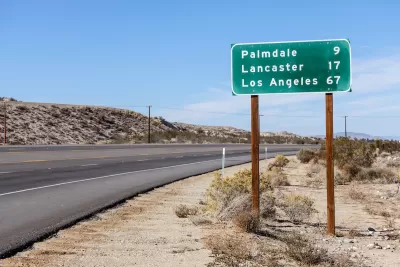Many rapidly growing inland California cities are facing increased extreme heat days due to climate change, putting more residents at risk of health issues and overwhelming local infrastructure.

California's inland cities, particularly in regions like the Antelope Valley, Apple Valley, and the Central Valley, are facing an alarming convergence of rising temperatures and rapid population growth. Driven by the need for affordable housing, many people are moving away from coastal areas into hotter inland communities. Unfortunately, these regions are projected to experience more extreme heat days as a result of climate change, leading to significant public health risks. As reported by Alejandra Reyes-Velarde and Arfa Momin, local governments are largely unprepared, leaving vulnerable populations, especially low-income and Latino communities, at heightened risk.
By 2050, many of these inland cities will experience over 25 high heat days per year, where temperatures soar above historical highs. In cities like Visalia and Fresno, temperatures could regularly exceed 100 degrees for over a month. While coastal cities like San Francisco and Santa Barbara remain relatively temperate, inland areas will endure extreme weather that exacerbates health conditions such as heat stroke, asthma, and heart disease. Studies show that the increasing number of extreme heat days will disproportionately affect already overburdened communities of color, contributing to more hospitalizations and emergency visits.
Local governments are struggling to address the risks associated with intensifying heat. Despite a 2015 state law requiring municipalities to incorporate climate change mitigation into their general and safety plans, many have failed to comply. While solutions such as cooling roofs, urban greening, and cooling centers are available, most cities lack the infrastructure and/or political will to implement them. These failures pose life-threatening risks, especially as inland populations grow rapidly due to people seeking affordable living conditions despite the extreme heat.
In cities like Victorville, Apple Valley, and Hesperia, residents and workers are already feeling the effects of increasingly hot summers. Workers who moved inland for cheaper rent, endure grueling conditions, with temperatures regularly exceeding 100 degrees. Local leaders have witnessed their once-temperate desert towns transform into areas where heat waves above 110 degrees are now commonplace. Without immediate intervention, the escalating heat combined with population growth could turn the California dream into a deadly reality for many.
FULL STORY: More extreme heat + more people = danger in these California cities. ‘Will it get as hot as Death Valley?’

Planetizen Federal Action Tracker
A weekly monitor of how Trump’s orders and actions are impacting planners and planning in America.

Map: Where Senate Republicans Want to Sell Your Public Lands
For public land advocates, the Senate Republicans’ proposal to sell millions of acres of public land in the West is “the biggest fight of their careers.”

Restaurant Patios Were a Pandemic Win — Why Were They so Hard to Keep?
Social distancing requirements and changes in travel patterns prompted cities to pilot new uses for street and sidewalk space. Then it got complicated.

Maui's Vacation Rental Debate Turns Ugly
Verbal attacks, misinformation campaigns and fistfights plague a high-stakes debate to convert thousands of vacation rentals into long-term housing.

San Francisco Suspends Traffic Calming Amidst Record Deaths
Citing “a challenging fiscal landscape,” the city will cease the program on the heels of 42 traffic deaths, including 24 pedestrians.

California Homeless Arrests, Citations Spike After Ruling
An investigation reveals that anti-homeless actions increased up to 500% after Grants Pass v. Johnson — even in cities claiming no policy change.
Urban Design for Planners 1: Software Tools
This six-course series explores essential urban design concepts using open source software and equips planners with the tools they need to participate fully in the urban design process.
Planning for Universal Design
Learn the tools for implementing Universal Design in planning regulations.
Heyer Gruel & Associates PA
JM Goldson LLC
Custer County Colorado
City of Camden Redevelopment Agency
City of Astoria
Transportation Research & Education Center (TREC) at Portland State University
Camden Redevelopment Agency
City of Claremont
Municipality of Princeton (NJ)





























